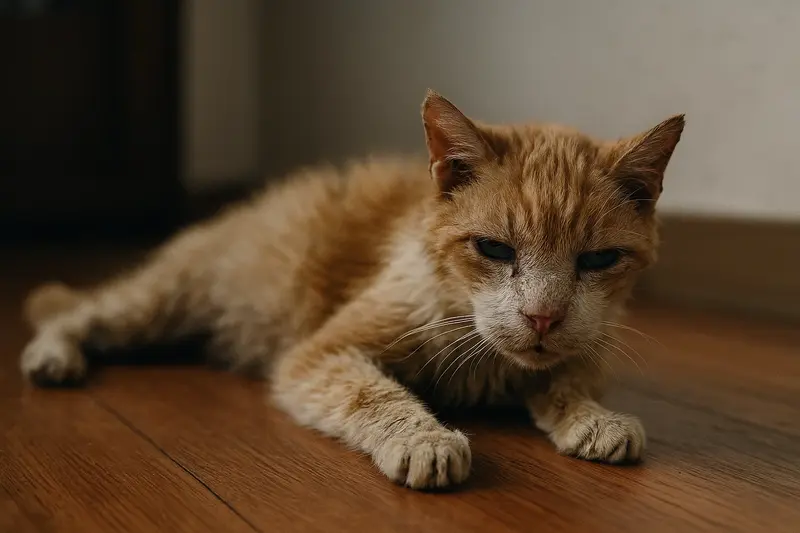Cats are more than just pets—they're companions, family members, and silent comforters throughout our lives. As they near the end of their journey, cats rarely express pain in obvious ways. Instead, they display subtle signs that signal they’re preparing to say goodbye. As a pet expert, this article aims to help owners understand the physical, behavioral, and emotional signs that a cat is nearing the end of life—and how to support them with love and dignity.

One of the earliest and most common signs is a sudden disinterest in food and water, even favorite treats.
Cats may become unusually quiet, spending most of their time curled in a corner, sleeping or resting.
Breathing may slow, become shallow, or appear erratic. Abdominal breathing or panting may also occur.
Dying cats often exhibit cold ears, paws, and nose due to a lowered body temperature.
Reduced urination and defecation
Possible loss of bladder or bowel control
Elimination in unusual places
Sudden weight loss
Dull, matted fur
Glazed or unresponsive eyes
Many cats will instinctively hide in quiet, dark places to spend their final hours—a behavior rooted in their wild ancestry.
Conversely, some cats become more affectionate, seeking extra attention and comfort from their humans.
Cats that are nearing death may stop grooming entirely, leading to unkempt or greasy coats.
Some cats may meow persistently or produce lower, hoarse sounds as they experience discomfort or disorientation.
Cats may appear emotionally distant or become restless, pacing or crying without clear cause.
Aggression, confusion, or walking in circles may be signs of cognitive decline or neurological deterioration.
Offer soft, palatable foods or liquids, but don’t force feeding—it may cause more stress.
Provide a quiet, padded area where your cat feels secure. Avoid loud noises or excessive handling.
Sit near your cat, speak softly, and offer gentle petting if welcomed. Your presence is deeply reassuring.
A vet can offer palliative care options or humane euthanasia to minimize suffering.
It's normal to mourn deeply. Cry, reminisce, or express your feelings—grief is love with nowhere to go.
Create a memory box, write a letter, or plant something in their honor. Celebrating their life can offer healing.
Talk to fellow pet lovers or seek support groups. Shared experiences can be comforting.
Don't rush to fill the void. When you're ready, you’ll know—grief takes its own path and timing.
Cats may not speak, but they communicate deeply through presence and gaze. As their time comes, they often just want your gentle company.
In the final moments, what matters most isn’t medicine—it’s your love, your quiet comfort, and your willingness to simply be there. In choosing compassion, you give them the greatest gift of all: a peaceful, dignified goodbye.
animal tags:
We created this article in conjunction with AI technology, then made sure it was fact-checked and edited by a Animals Top editor.